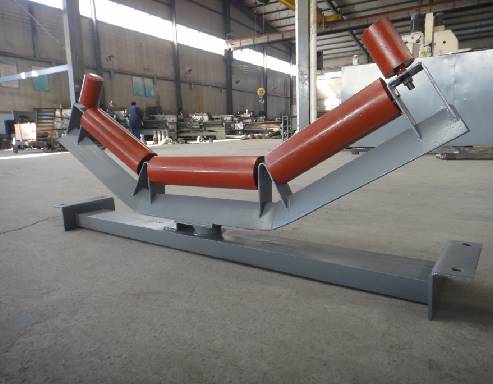 Afrikaans
Afrikaans  Albanian
Albanian  Amharic
Amharic  Arabic
Arabic  Armenian
Armenian  Azerbaijani
Azerbaijani  Basque
Basque  Belarusian
Belarusian  Bengali
Bengali  Bosnian
Bosnian  Bulgarian
Bulgarian  Catalan
Catalan  Cebuano
Cebuano  Corsican
Corsican  Croatian
Croatian  Czech
Czech  Danish
Danish  Dutch
Dutch  English
English  Esperanto
Esperanto  Estonian
Estonian  Finnish
Finnish  French
French  Frisian
Frisian  Galician
Galician  Georgian
Georgian  German
German  Greek
Greek  Gujarati
Gujarati  Haitian Creole
Haitian Creole  hausa
hausa  hawaiian
hawaiian  Hebrew
Hebrew  Hindi
Hindi  Miao
Miao  Hungarian
Hungarian  Icelandic
Icelandic  igbo
igbo  Indonesian
Indonesian  irish
irish  Italian
Italian  Japanese
Japanese  Javanese
Javanese  Kannada
Kannada  kazakh
kazakh  Khmer
Khmer  Rwandese
Rwandese  Korean
Korean  Kurdish
Kurdish  Kyrgyz
Kyrgyz  Lao
Lao  Latin
Latin  Latvian
Latvian  Lithuanian
Lithuanian  Luxembourgish
Luxembourgish  Macedonian
Macedonian  Malgashi
Malgashi  Malay
Malay  Malayalam
Malayalam  Maltese
Maltese  Maori
Maori  Marathi
Marathi  Mongolian
Mongolian  Myanmar
Myanmar  Nepali
Nepali  Norwegian
Norwegian  Norwegian
Norwegian  Occitan
Occitan  Pashto
Pashto  Persian
Persian  Polish
Polish  Portuguese
Portuguese  Punjabi
Punjabi  Romanian
Romanian  Russian
Russian  Samoan
Samoan  Scottish Gaelic
Scottish Gaelic  Serbian
Serbian  Sesotho
Sesotho  Shona
Shona  Sindhi
Sindhi  Sinhala
Sinhala  Slovak
Slovak  Slovenian
Slovenian  Somali
Somali  Spanish
Spanish  Sundanese
Sundanese  Swahili
Swahili  Swedish
Swedish  Tagalog
Tagalog  Tajik
Tajik  Tamil
Tamil  Tatar
Tatar  Telugu
Telugu  Thai
Thai  Turkish
Turkish  Turkmen
Turkmen  Ukrainian
Ukrainian  Urdu
Urdu  Uighur
Uighur  Uzbek
Uzbek  Vietnamese
Vietnamese  Welsh
Welsh  Bantu
Bantu  Yiddish
Yiddish  Yoruba
Yoruba  Zulu
Zulu conveyor pulley parts
Understanding Conveyor Pulley Parts Essential Components for Efficient Material Handling
Conveyor systems are integral to modern manufacturing and logistics, facilitating the smooth transport of materials across various facilities. Among the most critical components of these systems are conveyor pulleys, which play a vital role in supporting the belt, maintaining tension, and realigning the conveyor belt. In this article, we will delve into the essential parts of conveyor pulleys, their functions, and importance in material handling systems.
The Basic Structure of Conveyor Pulleys
Conveyor pulleys are typically composed of several key parts the shell, shaft, bearings, end discs, and in some cases, lagging. Each part has a unique role that contributes to the overall functionality of the pulley.
1. Shell The shell is the outer cylindrical part of the pulley. It is responsible for driving the belt and is usually made from durable materials such as steel or rubber. The choice of material depends on the type of environment in which the pulley will operate, including factors like moisture, temperature, and the types of materials transported.
2. Shaft The shaft runs through the center of the pulley and connects it to the drive mechanism. It is designed to handle the torque generated by the motor and supports the weight of the pulley along with the load it carries. The shaft is usually manufactured from high-strength steel to withstand heavy loads and ensure durability.
3. Bearings Bearings allow the pulley to rotate smoothly around the shaft. They are crucial for reducing friction and wear between moving parts. Depending on the operational demands, conveyor pulleys can utilize standard ball bearings or heavy-duty bearings designed for higher loads and minimal maintenance.
4. End Discs The end discs are located at either end of the pulley and serve to secure the shell to the shaft. They also contribute to the structural integrity of the pulley, preventing the shell from deforming under heavy loads. End discs are often welded or bolted to the shell and shaft for a secure fit.
5. Lagging Lagging is an optional component that covers the surface of the pulley shell. It is typically made from rubber or ceramic materials and serves to enhance traction between the pulley and the conveyor belt. Lagging helps in minimizing slippage, improving the overall efficiency of the conveyor system, and extending the life of both the belt and the pulley.
conveyor pulley parts

Types of Conveyor Pulleys
Different applications require different types of conveyor pulleys
. The most common types include- Drive Pulleys These pulleys are responsible for supplying power to the conveyor belt. They are typically located at the head end of the conveyor system.
- Tail Pulleys Positioned at the conveyor's tail end, these pulleys help to return the belt to its original position and support the tension in the system.
- Snub Pulleys These are used to increase the angle of contact between the belt and the drive pulley, enhancing the grip and driving force.
- Idler Pulleys These are non-powered pulleys that support the belt and material on the conveyor. They help maintain belt tension and alignment without providing any driving force.
Importance of Conveyor Pulley Parts
The reliability and efficiency of a conveyor system largely depend on the quality of its pulleys and their components. Regular maintenance and the use of high-quality materials can prevent premature wear, reducing downtime and associated costs. Properly functioning pulleys contribute to smooth operations, thereby increasing productivity in material handling.
In conclusion, understanding the parts of conveyor pulleys is essential for anyone involved in the design, maintenance, or operation of conveyor systems. Each component plays a significant role in ensuring that materials are transported efficiently and safely. By investing in quality components and proper maintenance practices, businesses can ensure that their conveyor systems operate smoothly, ultimately leading to improved operational efficiency and reduced costs over time.
-
Revolutionizing Conveyor Reliability with Advanced Rubber Lagging PulleysNewsJul.22,2025
-
Powering Precision and Durability with Expert Manufacturers of Conveyor ComponentsNewsJul.22,2025
-
Optimizing Conveyor Systems with Advanced Conveyor AccessoriesNewsJul.22,2025
-
Maximize Conveyor Efficiency with Quality Conveyor Idler PulleysNewsJul.22,2025
-
Future-Proof Your Conveyor System with High-Performance Polyurethane RollerNewsJul.22,2025
-
Driving Efficiency Forward with Quality Idlers and RollersNewsJul.22,2025





























